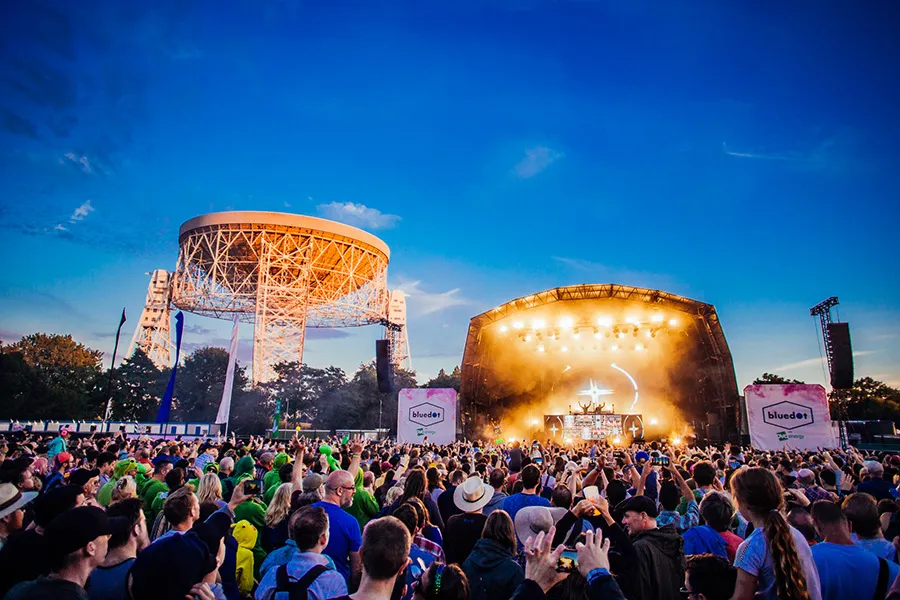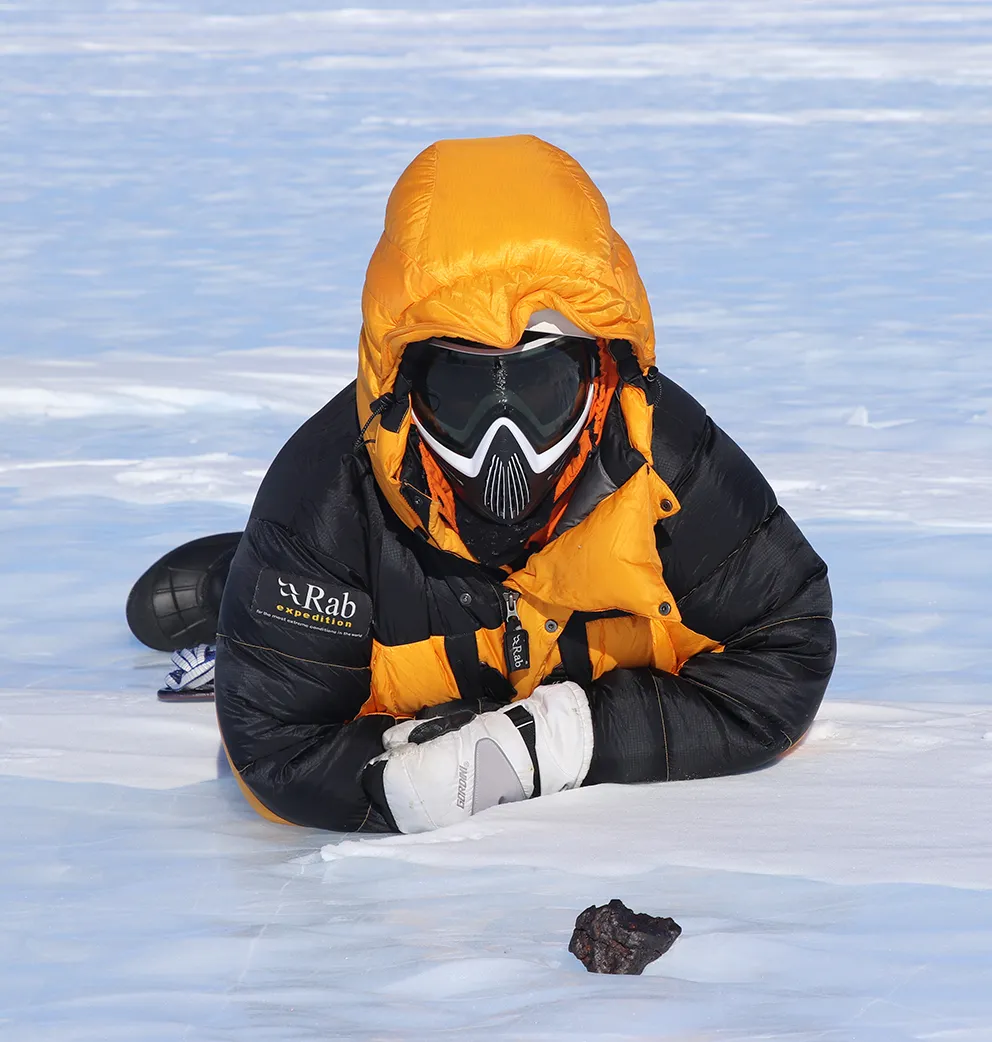Rocks that fall to earth from space as meteorites can tell scientists a lot about the Solar System: how it formed, evolved and what it might have been like very early on.
Dr Sarah Crowther is a spacerocks expert from the University of Manchester and we got the chance to speak to her about meteorites, Antarctic expeditions and the threat to Earth from asteroids.

Why do we study space rocks?
We can learn a lot about the origins and evolution of the Solar System through analysing meteorites and other extra-terrestrial materials.
What kind of materials did the Solar System form from? How have they changed into the types of materials we see on Earth today?
Earth's a great starting point. It's the planet we live on, it's the planet we know most about, but Earth is geologically active.
We have volcanoes, earthquakes, weather: all these things have overwritten the geological record of when Earth first formed 4.5 billion years ago.
But some of the meteorites we analyse, for example, are from asteroids that were made from the same material that formed Earth, and they haven't changed in 4.5 billion years.
They contain a record of the material out of which the Solar System formed.
Where do the meteorites that fall to Earth actually come from?
The vast majority of meteorites we find on Earth come from the asteroid belt between Mars and Jupiter, but they come from a variety of different asteroids.
We also have a few hundred meteorites from the Moon, and a few hundred meteorites from Mars.
What is your own area of research?
Most of my work is looking at just one particular element in extra terrestrial materials called xenon.
If you can envisage the periodic table, the very right-hand column are what we call 'noble gases', and that's things like helium, neon, argon, krypton and xenon.
These are particularly interesting and useful for tracing the evolution processes of the Solar System.
They're in all rocky materials that come from the Solar System, but only in really small amounts, which makes them quite hard to measure. But when you can measure them, they can be really useful.
They have lots of different isotopes. Isotopes are different forms of the same element, and different physical processes such as radioactive decay can form different isotopes or different forms of these noble gases.
By looking at their signature, we can learn about the types of processes that contributed to the Solar System materials that we're familiar with today.
You've also had the chance to work on lunar samples from Apollo missions...
That's right, yes. I've worked on Apollo samples with colleagues here from Manchester and colleagues in the US.
We've also worked on samples from NASA's Genesis mission, which was a mission that collected the hot plasma coming off the Sun, called the solar wind, and brought it back to Earth for analysis.
The Sun makes up 99.8 per cent of the total mass of the Solar System, but prior to the Genesis mission we actually knew very little about its composition.
The Genesis mission collected this hot plasma, brought it back so people could analyse it in the labs on Earth and learn more about the composition.

What have the Apollo samples revealed about the Moon?
If you look at all the research that have been done on Apollo samples, people have learnt an awful lot since the first ones were brought back almost 50 years ago.
Our understanding of how the Moon formed and its characteristics and features has completely changed from before the Apollo missions.
The work I've mostly been doing is with a colleague in the US and we've been looking at some tiny little pieces of rock called zircons, which are found in lunar soils and the rocks that were brought back by the Apollo astronauts.
We're trying to determine their ages to understand the bombardment history of the Moon.
You can see from looking at the Moon that it's covered in craters, so it's been hit an awful lot of times.
Similarly you can see a lot of craters on Mars. They're less obvious on Earth, because our planet is still geologically active.
To investigate the bombardment history of the Moon, we need to look at samples that are older than the time at which the impacts occurred.
Zircons are good for this because their crystallisation ages - when they formed or crystallised - are between about 3.9 and 4.4 billion years ago.
The zircons incorporate small amounts of uranium (U) and plutonium (Pu), both of which decay to produce isotopes of xenon (Xe) – so we can also try to determine U-Xe and Pu-Xe ages for the zircons and see if they are consistent with the crystallisation ages, or if they were reset by impacts.
As well as looking at lunar zircons, we also look at zircons from the terrestrialVredefort impact feature in South Africaand apply the same types of analyses.
We find that the U-Xe ages for some grains were consistent with their crystallisation ages, but the U-Xe ages for others were younger than their crystallisation ages, suggesting they experienced some xenon loss due to the impact.
Understanding the Vredefort zircons then helps with the interpretation of the data for the lunar zircons.
Again, we see that some of the lunar zircons have ages consistent with their crystallisation ages, whereas others show evidence of recent xenon loss.
You're going to be speaking at this year's Bluedot science and music festival at Jodrell Bank. Is this the first year you've been involved with Bluedot?
We've been involved with all the Bluedot festivals. We even took part in a couple of theLive from Jodrell Bankevents, which were the predecessors of the Bluedot festival.
It's a great weekend to be part of. There are loads of talks and hands-on science activities and live music in the evening.

What will you be talking about at this year's festival?
I will be doing a talk on the types of extra-terrestrial materials we have here on Earth that we can study: meteorites, rocks from the Moon and other return samples.
Our research group as a whole will have an activity in one of the science fields, where we will have samples of meteorites that people can look at.
We will have Apollo rocks there for people to see and other activities related to our research in extra-terrestrial activities.
I think most people are really amazed to be holding these rocks. They can't quite believe that they're holding a piece of the Moon or Mars.
It's not every day that you can go home and say "I held a piece of the Moon today!"
Is it easy enough to actually go outside and look for meteorites and find them?
Yes and no. Meteorites can land anywhere on Earth; there's no place they're more likely to land than others.
However there are places in which they're far easier to find.
If you happen to go out into the street today and see a rock on your walk home, it is probably not a meteorite.
But if you were walking through the Sahara Desert or walking through Antartica and you came across a black rock, the chances are that that probably is a meteorite, because it looks completely different to the rest of the environment.
Aren't there Antarctic expeditions to search for meteorites led by researchers from the University of Manchester?
Yes, in (northern hemisphere) winter 2018 the first British-led trip searching for meteorites in Antarctica took place, and they're actually searching for a type of meteorite that are predominantly made of metal, which they think are buried under the ice.
There were two parts to the mission. First of all, they're using what is basically a big metal detector to sweep over the ice and try and find these meteorites that are buried just below the surface.
The other part of the mission, which was being led by Dr Katherine Joy, is to scope out some sites that have never been looked at before, to see if there are any meteorites there and if they might be suitable to use with the metal detectors in future years.

Do space rocks pose a threat to our planet or our species?
Earth will get hit at some point again in the future. It's been hit before. We know that the dinosaurs died out because of an asteroid strike.
You can see craters on Earth where impacts have occurred in the past, so we will get hit again. It's just a case of what and when.
Personally, I don't know that there's much we can do to prevent this happening, so I'm not worrying about it!
Do you think that the Hollywood notion of deflecting asteroids from Earth is a bit far-fetched?
I think this is something that people are looking into and it might be feasible, but the problem is that there are so many asteroids out there and we only know about a small fraction of them.
We even only know about a small fraction of the ones that we would consider to be a risk to Earth.
So we have to actually know that an asteroid is there and that it's a risk to us before we can do anything about it.
Dr Sarah Crowther will be appearing at this year's Bluedot Festival and will behosting workshops offering visitors the chance to see and handle lunar samples.
